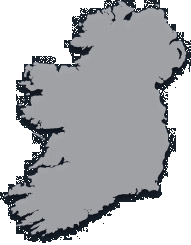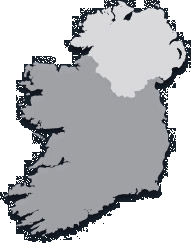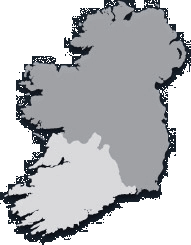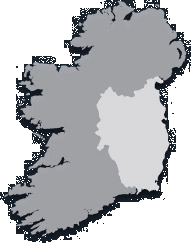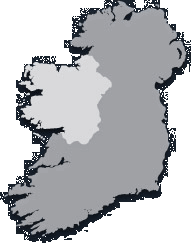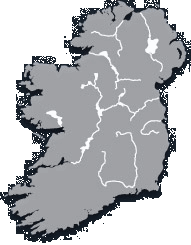

Traditional Boats of Ireland Book
History, Folklore and Construction
Read reviews/press release & see inside
- Recorded Boats
- 12ft punt
- A. K. Ilen
- Aigh Vie - Manx Nobby
- Curach Adhmaid
- Currach - Blasket Island
- Currach - Inisheer Island
- Currach - Inishturk Island
- Currach - Inishkea Island
- Currach - Scattery Island
- Drontheim
- Fishing Smack - Richard Hall
- Free State
- Galway hooker
- Galway Hooker - Gleoiteog
- Hanorah - Heir Island lobster Boat
- Kerry Naomhóg
- Kinsale Hooker
- Lake Angling Boat - Lough Corrib
- Lough Erne YC - Model 1
- Lough Erne YC - Model 2
- Lough Erne YC - Model 3
- Lough Erne YC - Model 4
- Lough Erne YC - Model 5
- Lough Erne YC - Model 6
- Lough Erne YC - Model 7
- Lough Erne YC - Model 8
- Lough Erne YC - Model 9
- Naomh Brigid
- Naomh Lua
- Rankin dinghy
- Saoirse
- Seine Follower Boat
- Tern - Hegarty Lobster Boat
- Three Hand Kerry Naomhog - Model
- Topaz - Manx Nobby
- Water Nymph 1885
- West Cork Mackerel Yawl
- Boatbuilders
- Jimmy Furey
- Walter Levigne
- McDonalds - Model 1
- McDonalds - Model 2
- McDonalds - Model 3
- McDonalds - Model 4
- McDonalds - Model 5
- Tyrells - 35ft Motor Fishing Vessel
- Tyrells - Model 1
- Tyrells - Model 2
- Tyrells - Model 3
- Tyrells - Model 4
- Tyrells - Model 5
- Tyrells - Model 6
- Tyrells - Model 7
- Tyrells - Model 8
- Tyrells - Model 9
- Tyrells - Shipwright
- Daingean Museum Store
- Four Oared Boat
- Two-masted carvel-built boat
- GreenCastle Museum
- GreenCastle Museum Model 1
- GreenCastle Museum Model 2
- GreenCastle Museum Model 3
- GreenCastle Museum Model 4
- Turlough Park Museum
- Currach Collection
- Museum Interior
Copies and / or reproductions of material on the web-site shall Not be made without the express permission of Traditional Boats of Ireland."
- Name of vessel
- National Museum model F-1993
- Designer
- Unknown
- Builder of vessel
- Unknown
- Date of vessel / Date of model
- Unknown
- Some given dimensions of the yacht (LOA, LWL, Draft etc)
- Model 4' 2 ¾" LOA........1' 4 ¾" Beam (measured)
- PRINCIPAL PARTICULARS (calculated)
- Length Overall.....................................25ft 6in
- Length L.W.L.......................................22ft 10in
- Beam..................................................15ft 3in
- Draught ..............................................5ft 6in
- Displacement.......................................2.375 tons
- Cp ....................................................... 0.557
- Scale of the model
- 2" = 1'-0"
- Owner's name / Home port.
- National Museum of Ireland
- General Description:
- Superbly detailed carvel model. Rig and hull type would suggest early to mid 18th Century possibly south coast origin. Curious platform at gunwhale level port side main thwart.( see pictures ) Forged iron mast gates at main thwart and forward beam. Very heavy main and fore masts.
- Any other information.
-
This finely detailed model is a mystery. We have no hard information as to where it came from, or indeed where in Ireland it was used. But forensically, we can make some assessment. The scale of the model is presumed to be a most untypical 2 inches to the foot, but we deduce this from the ergonomics of the thwart positions and the height of the tiller.
Form follows function, so we can say that it is most probably an inshore drift net fishing craft, probably from the south coast and dating to the late 18th or early 19th century. Thus the masts are intended to be lowered, using the forged iron gates on the thwarts, a necessary feature of vessels needing to lie to drift nets all night, when herring or other pelagic species rise to the surface. The carvel build, as against clinker, is more typical of the south and west coasts. The sails have been preserved showing wonderful detail of eye splicing and reefing grommets. The large sail area, and the presence of only two rowing positions, makes it clear that this was a vessel which needed to bring the catch back quickly to harbour. The rounded stem profile also suggests an 18th century origin, not unlike ship’s boats of the period; straighter stems are more representative of the 19th century.
It is known that fickle herring shoals only occasionally came south to the Irish and Celtic seas, but Cork and Waterford exported huge quantities of salted herring in the late 18th century, along with salted beef, butter, so this may well have been one of the vessels on which these cities prospered greatly at that time as evidenced in their Georgian architecture and cathedrals. But in the absence of more information, the model is quaintly named after the location of the National Museum’s store in Daingean, Co. Offaly, about as far from the sea as one can get!
Does anybody recogonise this boat type or have any further suggestions or information ?

